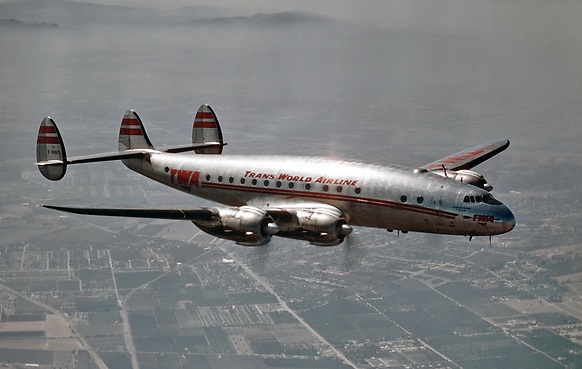

Captain William John (“Jack”) Frye, president of the airline, and his co-pilot, Captain Lee Flanagin, T&WA’s Western Region Operations Manager, were at the controls with Captain Paul S. Frederickson and Captain A.O. Lundin aboard as relief pilots. Flight Engineers Paul Henry and E.T. Greene completed the flight crew. In the passenger cabin were flight attendants Dorraine Strole and Rita P. Crooks. The 44 passengers were primarily news reporters.
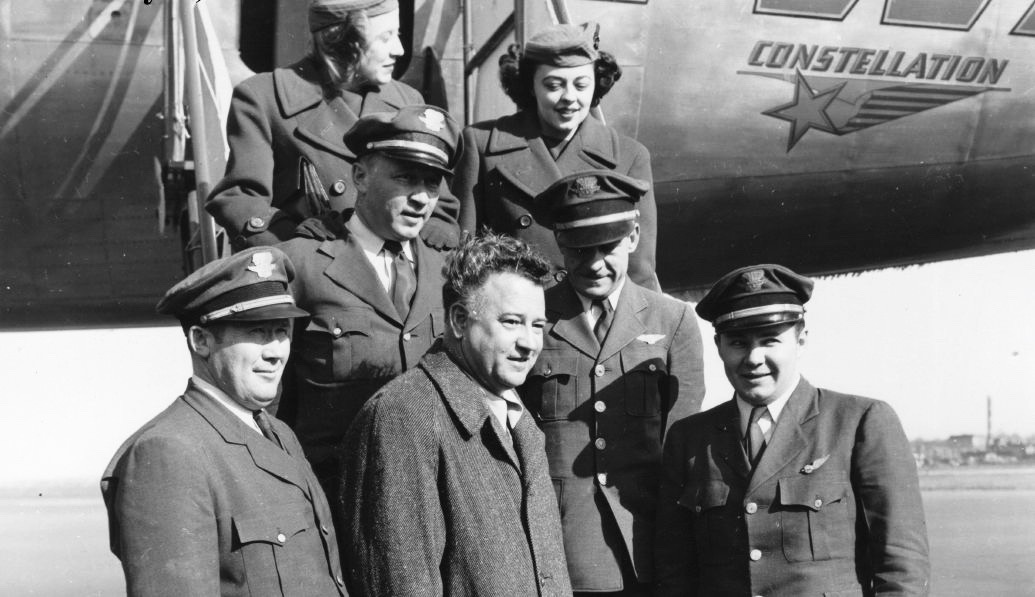
Navajo Skychief departed Lockheed Air Terminal, Burbank, California, at 12:59:12 a.m., Pacific Standard Time (3:59:12 a.m., E.S.T.), and flew across the North American continent at an altitude of 15,000–17,000 feet (4,572–5,182 meters), taking advantage of tailwinds throughout the flight. The Constellation crossed over LaGuardia Airport, New York, at 1,500 feet (457.2 meters) at 11:27 a.m., Eastern Standard Time.
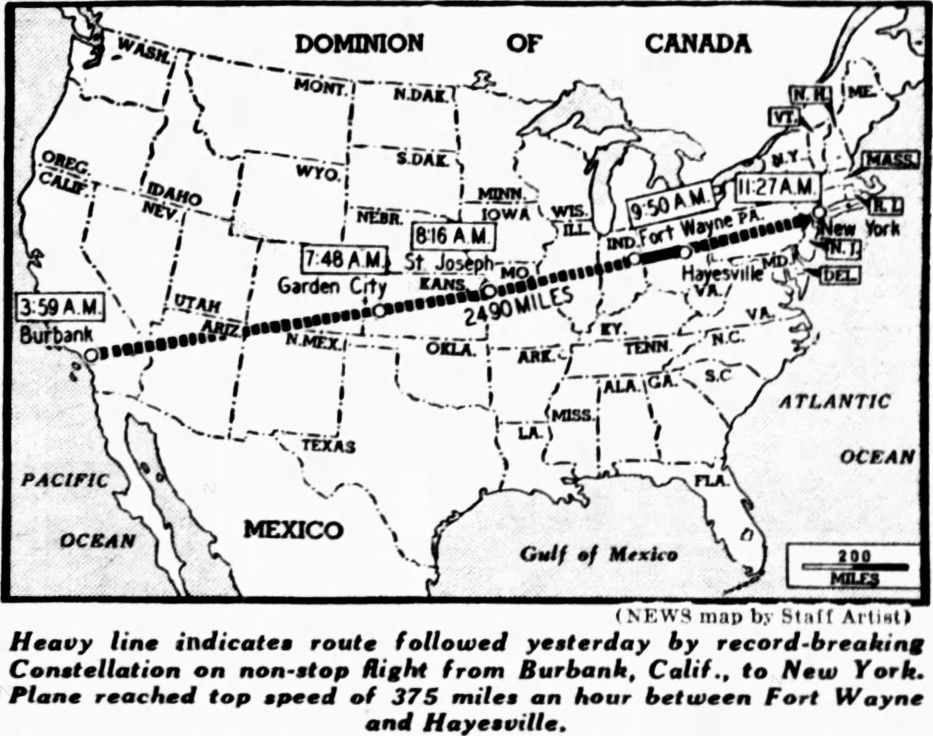
The 2,474-mile (3,954.2 kilometer) Great Circle flight took 7 hours, 27 minutes, 48 seconds, averaging 329 miles per hour (529.5 kilometers per hour), setting a National Aeronautic Association transcontinental speed record for transport aircraft.
With 52 persons aboard, this was the largest number carried in commercial passenger service up to that time.
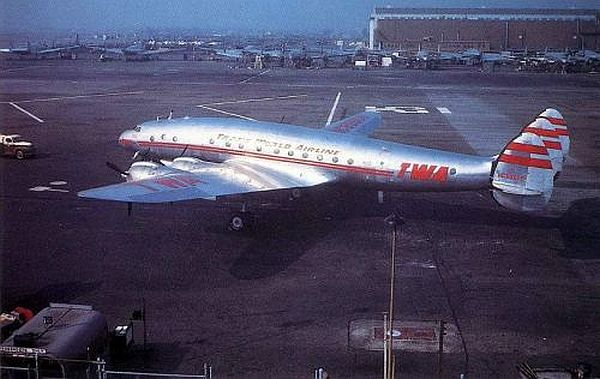
The four Duplex-Cyclone engines burned 450 gallons (1,703.4 liters) of gasoline per hour. On landing, 610 gallons (2,309.1 liters) of fuel remained.
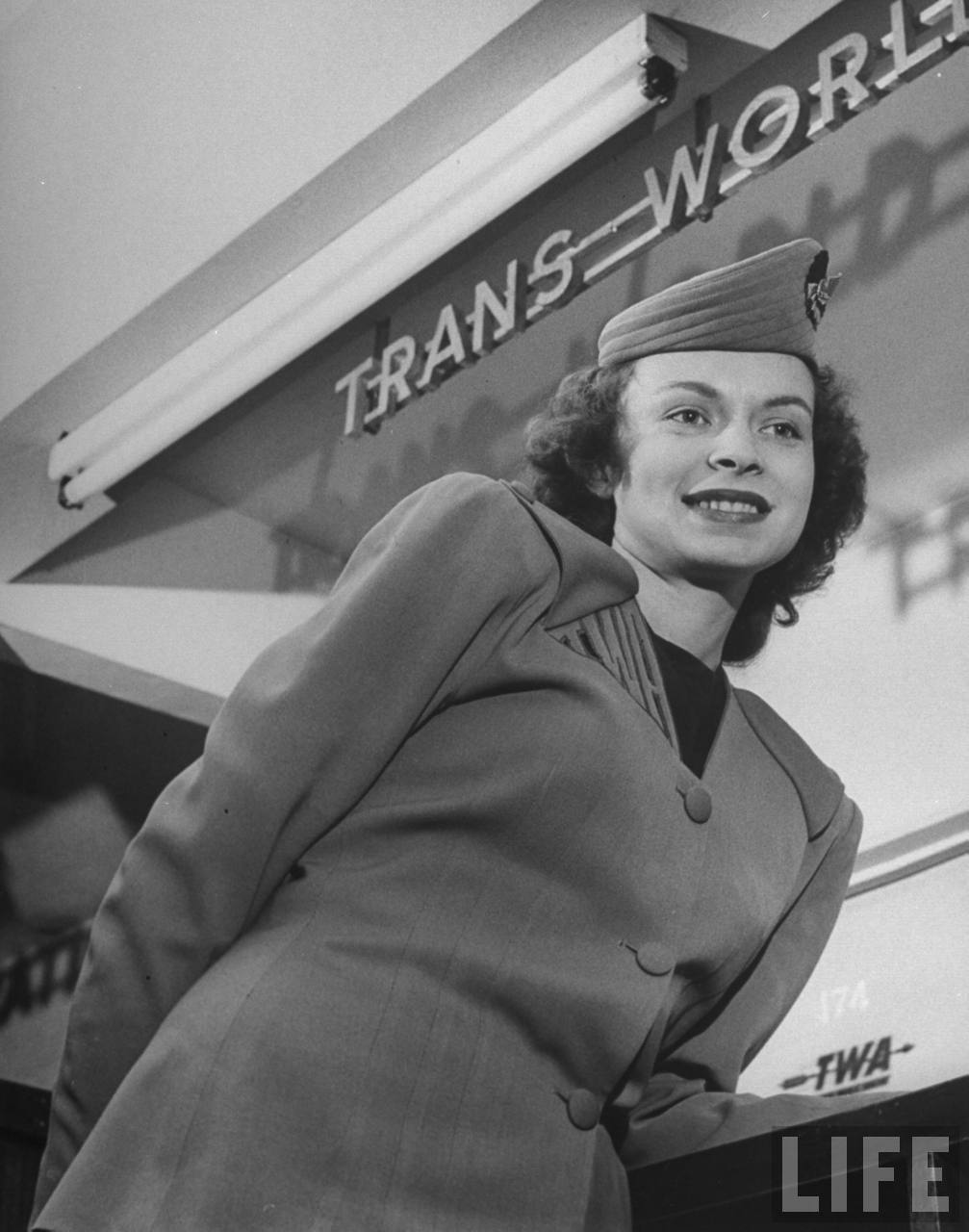

The Lockheed Constellation first flew in 1942, and was produced for the U.S. Army Air Corps as the C-69. With the end of World War II, commercial airlines needed new airliners for the post-war boom. The Constellation had transoceanic range and a pressurized cabin for passenger comfort.
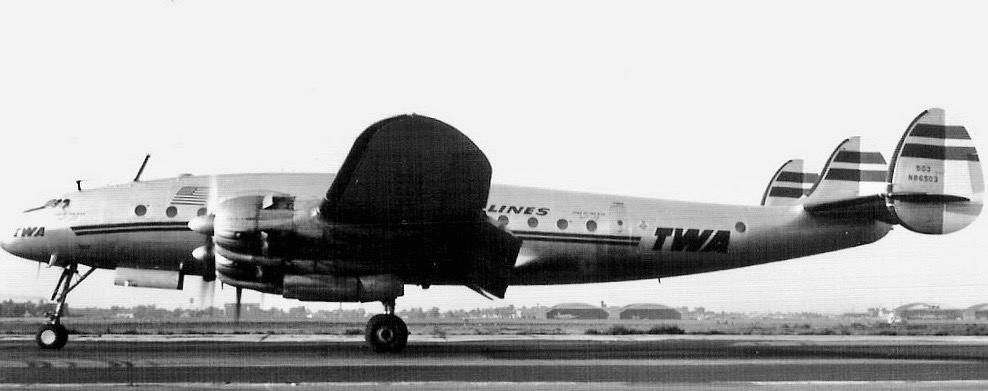
The Lockheed L-049 Constellation was operated by a flight crew of four and could carry up to 81 passengers. The airplane was 95 feet, 1 3⁄16 inches (28.986 meters) long with a wingspan of 123 feet, 0 inches (37.490 meters), and overall height of 23 feet, 7⅞ inches (7.210 meters). It had an empty weight of 49,392 pounds (22,403.8 kilograms) and maximum takeoff weight of 86,250 pounds (39,122.3 kilograms).
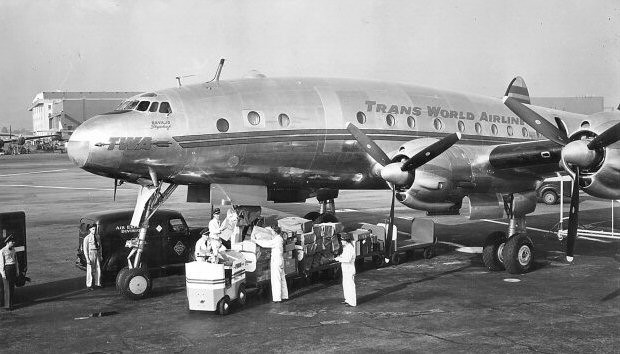
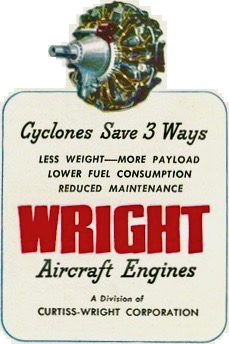
The L-049 had a cruise speed of 313 miles per hour (503.72 kilometers per hour) and a range of 3,995 miles (6,429.3 kilometers). Its service ceiling was 25,300 feet (7,711 meters).
22 C-69s and 856 Constellations of all types were built. Designed by the famous Kelly Johnson, the Lockheed Constellation was in production from 1943–1958 in both civilian airliner and military transport versions. It is the classic propeller-driven transcontinental and transoceanic airliner.
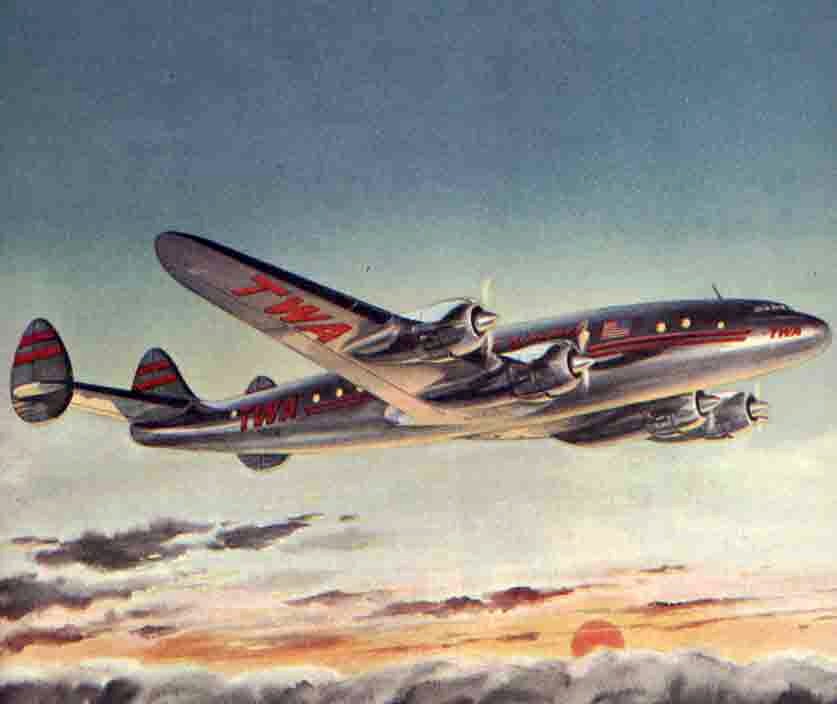
Jack Frye had founded the Aero Corporation of California, which would later become Transcontinental and Western, on 3 February 1926. He died at Tucson, Arizona, on 3 February 1959 at the age of 55 years.
¹ The Cyclone 18 series was also known as the Duplex Cyclone.
© 2019, Bryan R. Swopes
At the age of 8, I was a passenger on this flight in 1957. In June of 57, I flew from LA to LaGuardia alone and was met
by my grandmother. I had a window seat and it was great. I still remember it.
You are going to think this story is crazy but when I was a kid my house was in the mainflight path of Idlewild NY International Airport
One morning my friends and I were playing in the yard and we had seen an unfamiliar plane than we were used to we never saw a plane with 3 tails. We decided to jump on our bikes and ride to the terminal in the airport when we go there we put our bikes against the fence we walked through the gate and were standing on the tarmac and we were admiring the plane, when a plane cleaner came out we thought he was going to yell at us but instead asked us if we wanted to see the inside of it, our feet couldn’t get us up the stairs fast enough. The inside looked so futuristic the ceiling looked like it had stars and the seats were so comfortable. He than asked us if we wanted to sit in the captains seat we all said yes. Looking back it was amazing who would have thought that a bunch of kids could do that, by todays standards we would have all been thrown into reform school and the cleaner would have lost his job and put in jail. For me it was wonderful and I reminisce about all the time.
Very interesting article about the most elegant plane of that era. Thanks!
I was fortunate enough to visit TWA overhaul based in Kansas City in the early 60s. A few years later January ‘68 I flew from KC airport on a Branoff 727 to basic training San Antonio Texas.
What a fantastic experience, one that has lasted a lifetime.
The article says that the plane arrived in New York at 11:27 a.m. Surely, it should be p.m.
In the late 60’s I trained as a Flight Engineer on a L-749A that previously belonged to TWA. It was a wonderful experience.
I fly in a “Connie” from Atlanta to San Antonio to USAF Basic training. (July 1955).
My dad’s brother worked for TWA. I remember visiting him one time in the 60’s and he showed us all the Connie’s parked at the south end of Kansas City Municipal Airport. He said TWA had sold them for next to nothing and some of them were not very old.
I wish they had saved one for The Airline History Museum which is now very close to where they were parked.
There was what I think was a Constellation parked behind a hangar at Holman Field in St Paul, Mn until sometime in the 1980’s. Always wondered what happened to it. It did not look to be flyable.
Howard Hughes was very involved with the development of the Constellation. His desire to “put one over” on Juan Trippe’s Pan Am led to his creation of “Trans World”Airlines and the Constellation was important to that. Beautiful aeroplane.